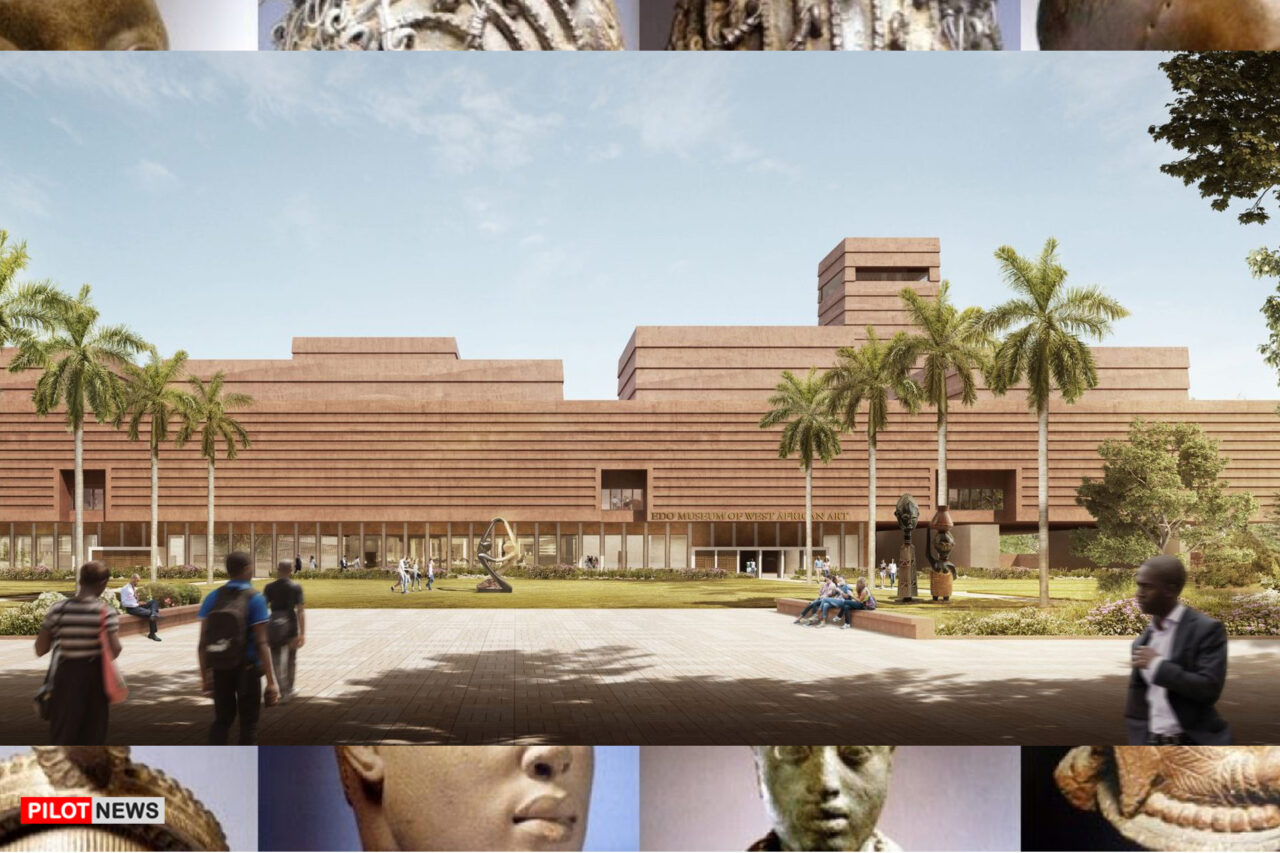By Simon Stephen
More details were released this week on plans for a new museum, gallery and research centre in Benin City, Nigeria.
The creation of the Edo Museum of West African Art (EMOWAA), which also includes the gallery and research centre, is linked to an archaeology project that is being carried out with London’s British Museum.
Details of the archaeology project were also announced this week. It is being led by the Legacy Restoration Trust (LRT), a Nigerian not-for-profit organisation. Adjaye Associates, the architect for the museum, is also involved.
The archaeology project, which will investigate the Kingdom of Benin, starts in 2021 and involves a wide range of partners including local communities, the Benin Royal Court, the Government of Edo State, and the National Commission for Museums and Monuments. The LRT, in partnership with the British Museum, has secured the equivalent of $4m of funding for project.
The initiative constitutes early phase work for the building of EMOWAA, which is being developed to house West African art and artefacts. It will include the Royal Collection, the most comprehensive display in the world of Benin Bronzes. The museum will also include galleries dedicated to contemporary art.
“Benin City is an ancient city with an incredible richness of artefacts and ruins that could and should form the bedrock of a centre for research, education in archaeology, art, curation and preservation,” said Godwin Obaseki, the Governor of Edo State.
“The construction of a world-class museum in the historic part of Benin City requires archaeological work to ensure historic remains buried below the ground at the museum construction site are preserved and recorded, and artefacts can be catalogued and preserved for display and to become part of the future collections of the new museum. I believe that this partnership archaeological work will begin to establish world-class archaeological research in Edo State and begin the journey towards the new museum and research centre.”
Architect David Adjaye, said: “From an initial glance at the preliminary design concept, one might believe this is a traditional museum but, really, what we are proposing is an undoing of the objectification that has happened in the West through full reconstruction.
The open dialogue that this project fosters is designed to create new opportunities to address the significant history of the Kingdom of Benin but also the painful history of the invasion and destruction of Benin City by British forces in 1897 – and to engage in new forms of cultural exchange and understanding.
The EMOWAA and the archaeology project are part of a wider scheme to revitalise the cultural core of Benin City and to aid in the economic revitalisation of the city.
The Kingdom of Benin was one of the most important and powerful pre-colonial states of West Africa. It is known today for its castings in brass and bronze – the Benin Bronzes – as well as objects in other materials, including ivory, coral and wood.
___
- Anambra 2025 Governorship Election Might Be an Open Contest - April 24, 2024
- Anambra Assembly Passes Bill To Prohibit Secret Cults - April 24, 2024
- 2024 Aguata NBA Law Week: AG, Prof. Ifemeje Touts Landmarks and Expectations - April 19, 2024


